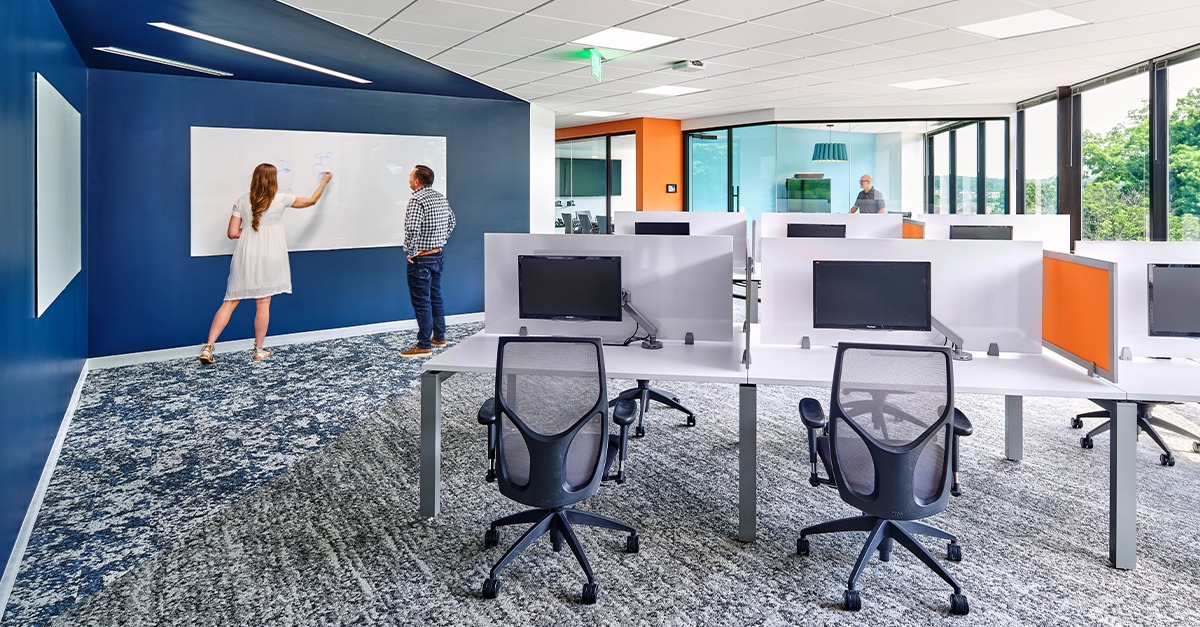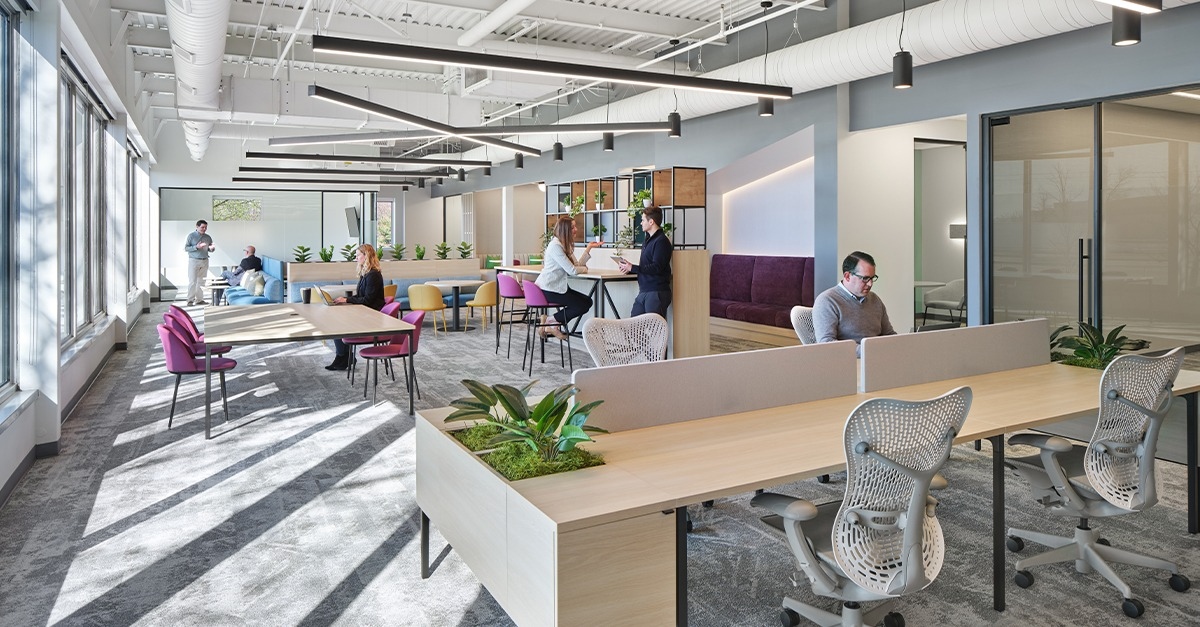Beyond Layouts: How Design-Build Champions a Holistic Agile Workplace
When thinking of your business’s workplace, is its purpose clear?
Does the design of the workplace support that purpose?
How effectively is technology integrated? Is it turnkey?
As businesses embrace the transformation to more adaptable workplaces and “hubs”, it is crucial that leaders know the answers to these questions. To successfully implement an agile workplace, there is a joint challenge and opportunity that must be focused on: the need for integration of technology, design, and purpose.
It is here that a holistic design-build approach emerges as a champion creator of agile workplaces, ensuring that all parties work in unison toward a common goal.

Challenges & Opportunities with Integration
Agile workplaces allow organizations to respond swiftly to evolving needs and support a variety of workstyles. They are a reflection of a holistic approach that requires a harmonious integration of multiple elements:
1. Technology
The challenge: Unreliable or outdated technology and technical difficulties may cause frustration and slow down in-office productivity and interactions among hybrid teams.
The opportunity: Technology that functions seamlessly together will enhance innovation and effectively connect both remote and in-person teams, which can in turn boost productivity. Smart systems, IoT devices, and video conferencing rooms are all ways to empower flexible working arrangements.
2. Purpose:
The challenge: Employees often ask, “Why do we even need to come into the office?” The physical workplace must provide clear value that employees don’t get from home.
The opportunity: When the workplace’s purpose aligns with organizational goals and values, it promotes positive culture, productivity, and a sense of wellbeing. Workplace strategy services help identify this purpose and how to create a workplace that supports it. Communicating the purpose gives employees clear expectations of the hybrid work policy and how to leverage the workplace to their advantage.
For example, businesses embracing a Workplace as Hub™ model position their workplace as a central connection point for collaboration. Employees may coordinate to dedicate office days for meetings; and may think of the office more positively knowing it is no longer a “second home.”
3. Design:
The challenge: Purposeful design goes far beyond a modern aesthetic and functional layout. It requires a strong strategy and expertise in executing that strategy. The coordination of multiple firms and/or subcontractors poses greater risk for disconnect across teams and cumbersome project management.
The opportunity: A well-designed workplace will align your people, real estate, and business goals to be a space that truly works best for your business. Design-build firms own the entire project, which keeps design intent clear and consistent throughout.
When these three elements are properly integrated into the workplace, the space functions as intended and the team is empowered with the right tools and technology for success.

The Design-Build Approach
To embrace the new normal and grow, organizations need an agile workplace that serves as a “hub” for their team. This means interpreting the “workplace” holistically across physical and digital space, designing the workplace to have a clear purpose and seamless technology.
Achieving this requires deep understanding and close collaboration throughout the course of the project. All teams must be aware of what the other teams are doing, working in unison towards the project’s objectives. Compared to the traditional approach rife with risks for disconnection, the design-build approach is an integrated, holistic approach from the get-go:
- All stakeholders work together from concept to completion, resulting in cohesive execution of a purposeful design.
- By having all stakeholders involved, potential risks, issues, and areas for improvement are identified and addressed early on. Procurement is started in the design phase to manage lead times. This proactive approach helps avoid costly reworks and delays.
- With design, architecture, preconstruction, and construction all under one roof, decisions are made collaboratively and the project progresses swiftly. As a design-build firm, Formcraft is able to reduce our client’s project management burden by 50% and deliver projects 25% faster than our conventional peers.
In today’s dynamic business world, creating agile workplaces is a holistic endeavor that requires a harmonious integration of technology, design, and purpose. The design-build approach is the key to making this transition to agile workplaces a reality. Businesses can trust that their project will be delivered as designed with more accurate budgeting and scheduling, maximizing their significant investment in the project.